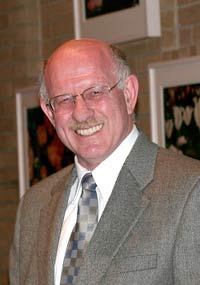
Handy Links
SLAC News Center
SLAC Today
- Subscribe
- Archives: Feb 2006-May 20, 2011
- Archives: May 23, 2011 and later
- Submit Feedback or Story Ideas
- About SLAC Today
SLAC News
Lab News
- Interactions
- Lightsources.org
- ILC NewsLine
- Int'l Science Grid This Week
- Fermilab Today
- Berkeley Lab News
- @brookhaven TODAY
- DOE Pulse
- CERN Courier
- DESY inForm
- US / LHC
SLAC Links
- Emergency
- Safety
- Policy Repository
- Site Entry Form

- Site Maps
- M & O Review
- Computing Status & Calendar
- SLAC Colloquium
- SLACspeak
- SLACspace
- SLAC Logo
- Café Menu
- Flea Market
- Web E-mail
- Marguerite Shuttle
- Discount Commuter Passes
-
Award Reporting Form
- SPIRES
- SciDoc
- Activity Groups
- Library
Stanford
Around the Bay
Dorfan Today: Playing Laser Jacks
 Almost everyone has played the game of Jacks at sometime in his or her life. You throw the ball in the air and have to snatch up the five jacks before the ball hits the ground. You have little time and if you are too slow or too clumsy—you lose! Getting science data from the Linac Coherent Light Source (LCLS) will be much the same: speed and technique will be everything.
Almost everyone has played the game of Jacks at sometime in his or her life. You throw the ball in the air and have to snatch up the five jacks before the ball hits the ground. You have little time and if you are too slow or too clumsy—you lose! Getting science data from the Linac Coherent Light Source (LCLS) will be much the same: speed and technique will be everything.
When the LCLS comes online in 2009, it will be among the most powerful x-ray instruments ever built. And yet it is the very power of this new laser that is presenting some of the most profound research challenges. When focused tightly, the intense laser beam will almost immediately destroy many of the samples it shines on. Can useful data be recorded before a sample is vaporized? Now, thanks to recent collaborative research by scientists at Lawrence Livermore National Laboratory (LLNL), Uppsala University, SLAC, Deutsches Elektronen-Synchrotron (DESY) in Hamburg and several other institutions, an important step toward clearing this hurdle has been taken. We now have experimental evidence that we can get the jacks before the ball falls.
Using the FLASH soft x-ray free-electron laser at DESY, a team of researchers—led jointly by Janos Hajdu (Uppsala and SLAC) and Henry Chapman (LLNL)—has demonstrated how a free-electron laser similar in many ways to the LCLS may be used to capture an image in the fraction of an instant before the laser pulse destroys the sample. Hajdu and colleagues fired a soft x-ray pulse lasting a mere 25 femtoseconds at a nano-scale sample and obtained a diffraction pattern from the scattered beam before the sample vaporized into a plasma. The team then successfully used this diffraction pattern to recreate an image of the original sample as it appeared before any damage had occurred.
The LCLS will generate hard x-rays, which have wavelengths that are much shorter than soft x-rays at FLASH and are therefore suited for imaging much smaller, atomic-scale objects. The intensity of the LCLS beam will likely have the same effect on a sample—in this case stripping away all of the sample's electrons. At FLASH, the sample was heated to 60,000 degrees before it exploded. But by timing the pulse precisely and tuning the x-ray laser to just the right wavelength, Hajdu and colleagues have shown that valuable data can in principle be collected in the brief instant before the sample is affected by this extraordinarily rapid and intense punishment. The research will be published this week in Nature Physics.
I extend my congratulations to the team for this exciting result. Many research challenges at the LCLS will remain unknown until the facility is fully operational, but the success of this experiment is a huge step forward towards studying processes and phenomena unimagined only a few years ago.
For more information on this new result, click here.
—Jonathan Dorfan, November 13, 2006